Dating back to the 2nd or 3rd century C.E., this statue head was found among the ruins of Aphrodisias, which was renowned for its sculptors throughout the ancient world.
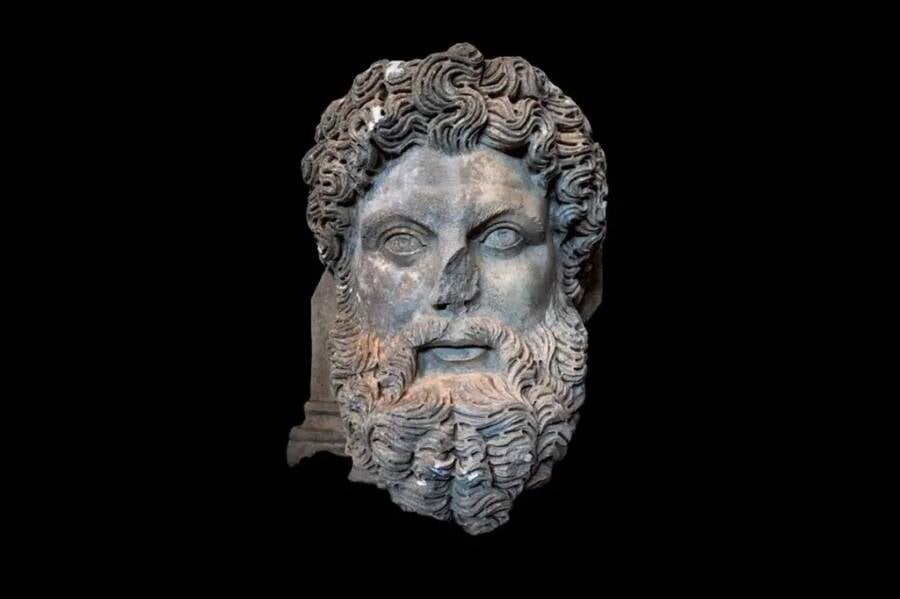
Republic of Türkiye Ministry of Culture and TourismThe marble head of Zeus may have once been part of an architectural console.
During excavations in the ancient Greek city of Aphrodisias in present-day Türkiye, archaeologists suddenly found themselves looking upon a formidable face. They recently unearthed a marble head of Zeus, the imposing god of the sky and thunder who ruled over other deities in Greek mythology.
This intricately carved statue is not only an impressive archaeological find, it also provides compelling insights about the history of Aphrodisias, whose sculptors were once renowned across the Hellenistic and Roman worlds.
The Marble Zeus Head Found In Aphrodisias
According to a statement posted on X by Mehmet Nuri Ersoy, Türkiye’s Minister of Culture and Tourism, the Zeus head was discovered in Aphrodisias, an ancient Greek city near the present-day Turkish village of Geyre.
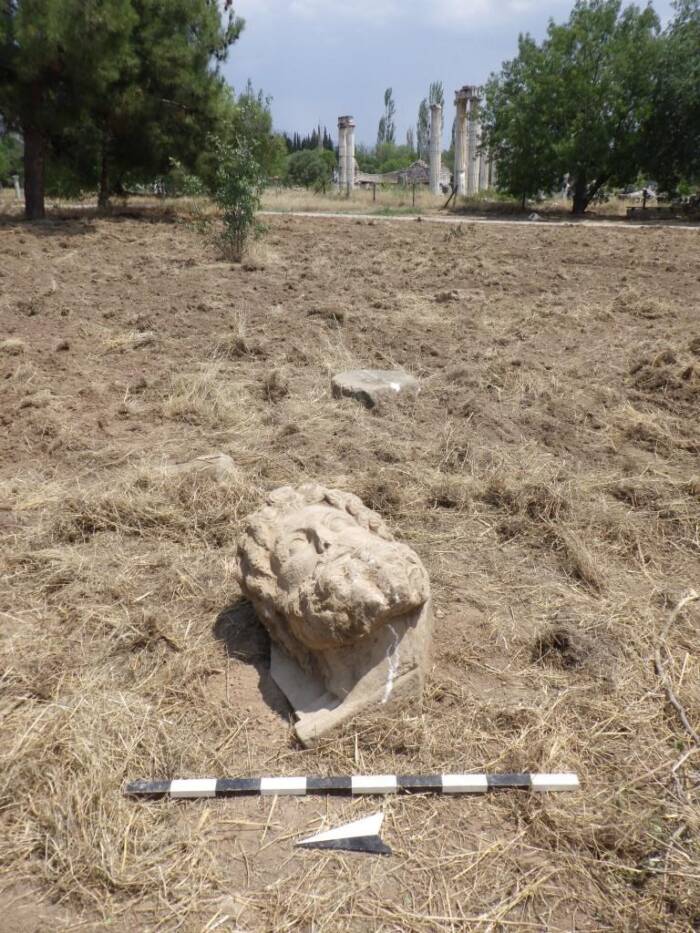
Republic of Türkiye Ministry of Culture and TourismThe marble head of Zeus was discovered in Aphrodisias, an ancient Greek city in present-day Türkiye.
“A unique discovery in Aphrodisias,” Ersoy wrote. “Colossal head of Zeus!”
The marble head was found 164 feet from the Temple of Aphrodite, the goddess of love who Aphrodisias was named after. It’s about two feet tall, carved from a single block of medium-grained Aphrodisias marble, and dates back to the second or third century C.E. Archaeologists believe that it may have once part of an architectural console.
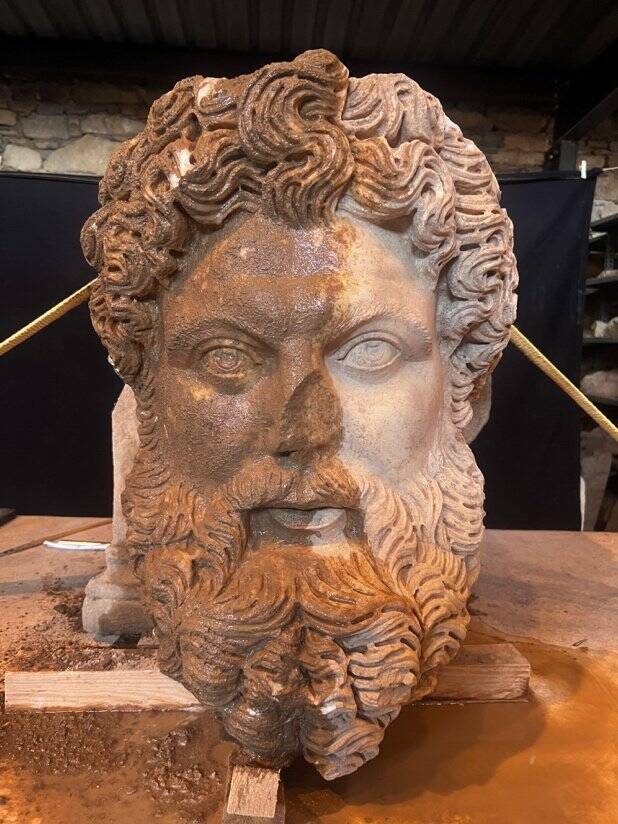
Republic of Türkiye Ministry of Culture and TourismThe Zeus head is about two feet tall and was made from Aphrodisias marble.
“Reunited with daylight after centuries, the marble head displays the magnificence of Zeus, the most powerful and important god in Greek mythology,” Ersoy wrote on X. The sculpture, he added “attracts attention with the magnificent workmanship of the hair and beard.”
Indeed, Aphrodisias was once renowned for its artisans and sculptors across the ancient world.
Aphrodisias: The Ancient Greek City Renowned For Its Sculptors
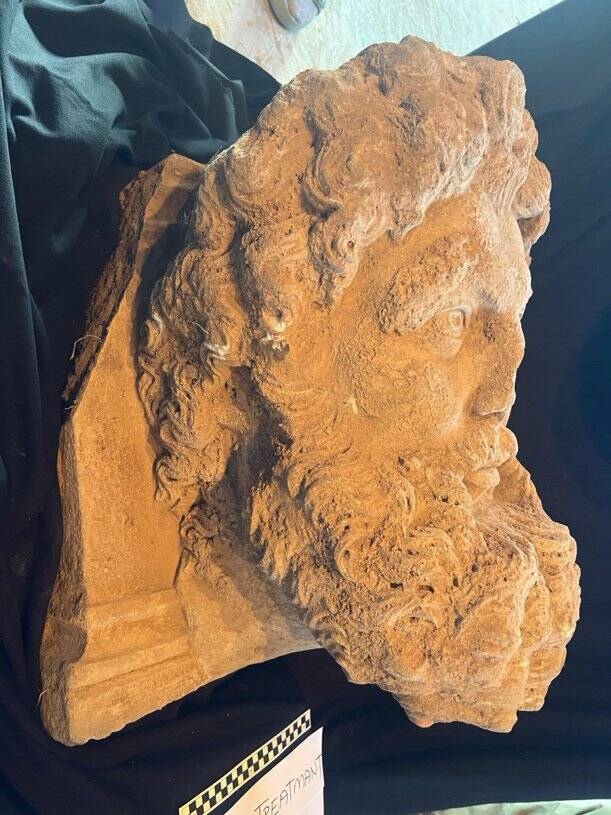
Republic of Türkiye Ministry of Culture and TourismThe profile of the Zeus head shows just how intricately the marble was carved.
The history of Aphrodisias stretches back to at least the third century B.C.E., when the Temple of Aphrodite was first constructed in the southwest of modern-day Türkiye. The city of Aphrodisias was developed about a century later, and came to include a network of orthogonal city streets as well as public buildings like temples, a theater, an agora, and two bath complexes.
The city’s association with Aphrodite gave it a privileged status within the Roman Empire, as Julius Caesar and his heir, Augustus, both claimed to be her descendants. But Aphrodisias was especially known for its marble.
Aphrodisias’ wealth came from the marble quarries located just northeast of the city, and Aphrodisias itself became known as a center for sculptors. It exported building facades and sculptures across both the Hellenistic and Roman worlds, and became known as a hub for sculpture production.
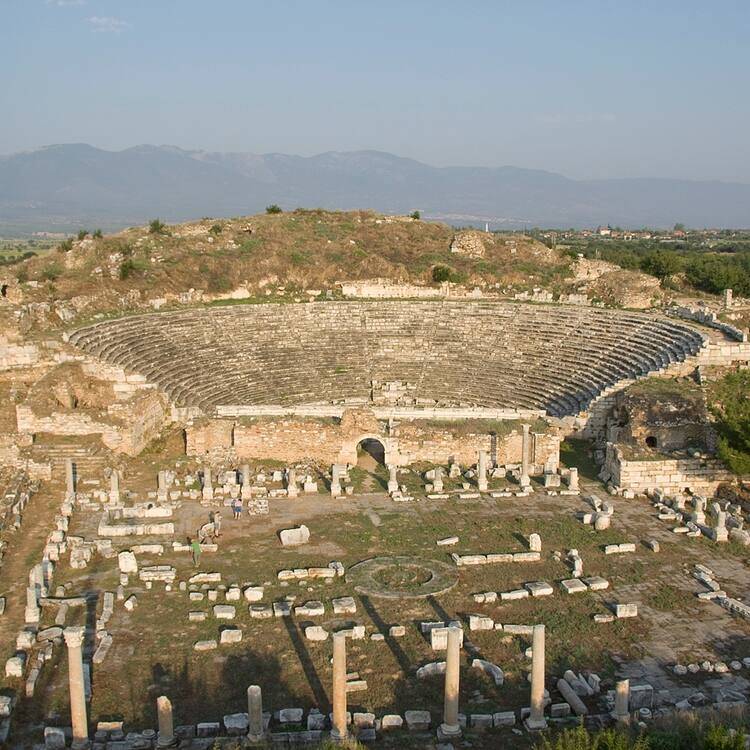
UNESCOAphrodisias is now a city of ruins, but it once played an important role in the Hellenistic and Roman worlds.
But Aphrodisias’ good fortune would not last. The city never recovered after a devastating earthquake in the seventh century C.E., and was sacked multiple times in the 12th century. By the end of the Middle Ages, Aphrodisias had fallen under Turkish control.
The discovery of the marble Zeus head in Aphrodisias is a reminder of its former might — and of the long, rich history of the area.
“Our work will continue unabated,” Ersoy remarked on X, “to carry the rich past of Anatolia to future generations.”
After reading about the marble Zeus head unearthed in the ancient Greek city of Aphrodisias, go inside the story of Hades, the Greek god of the Underworld. Then, learn about Medusa, the terrifying monster of Greek mythology who could kill with a single look.





